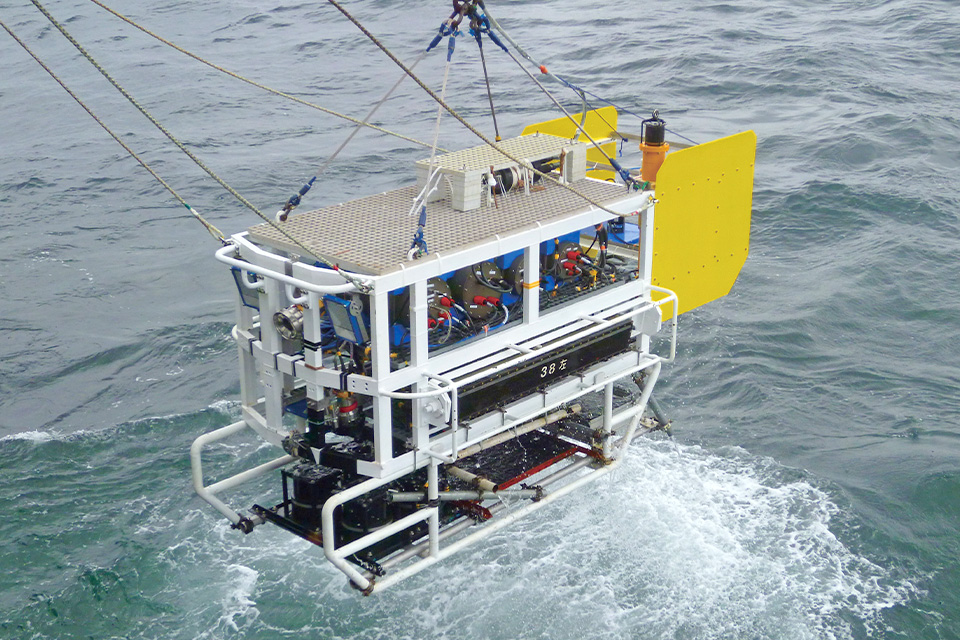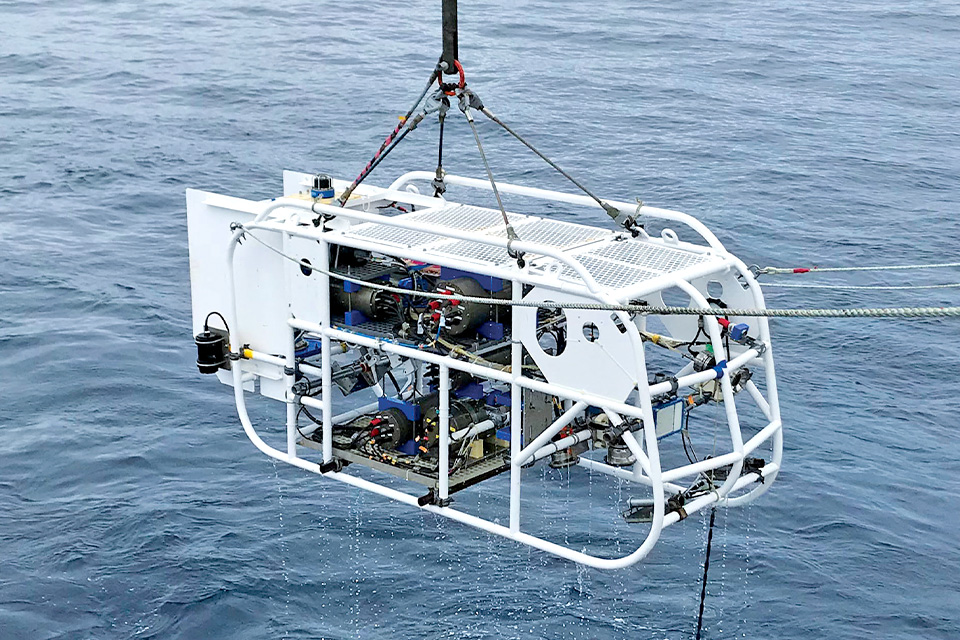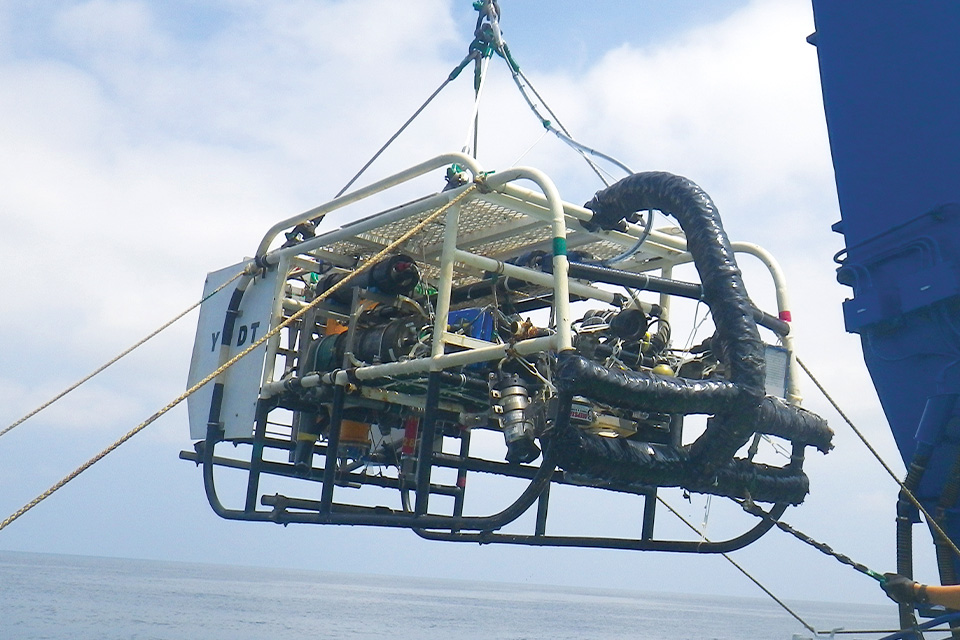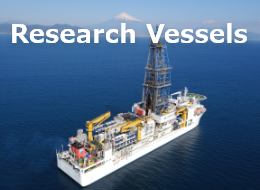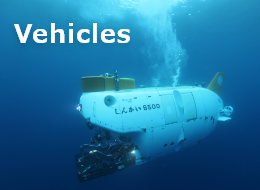
Our Research Vessels & Vehicles
Brochure for our Research Vessels & Vehicles (pdf)
Let's explore these vessels!
Deep-sea Scientific Drilling Vessel Chikyu
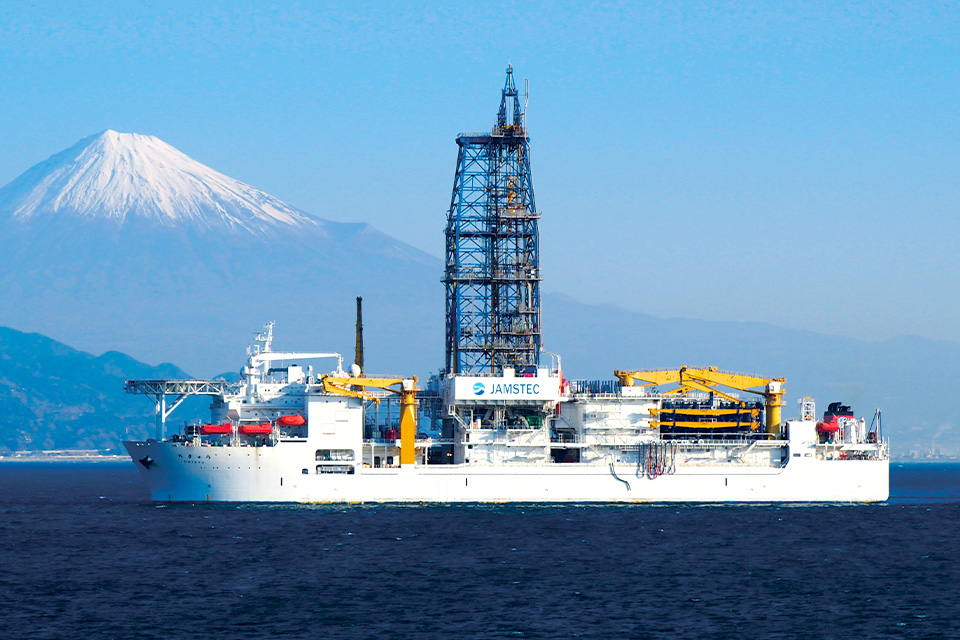
Chikyu is the most technologically advanced scientific drilling vessel in the world. It is also the first and the only research drilling vessel to date that uses riser drilling technology.
Chikyu can drill down to 7,000 m below the seafloor and is a key piece of equipment to answer scientists' questions about earthquake mechanics, past global climate changes, the origins and limits of life.
In the case of an ocean water depth of 2,500 m, it is possible to drill up to 7,000 m below the seabed.
They can be used many times. However, eventually they need to be replaced because of wear and tear. Drill bits can wear out so quickly that they need to be replaced after just one use.
Communication with the crew and other researchers aboard is really important! The food on the ship is delicious, and all-you-can-eat, so everyone needs to be careful not to eat too much!
Research Vessel Kaimei
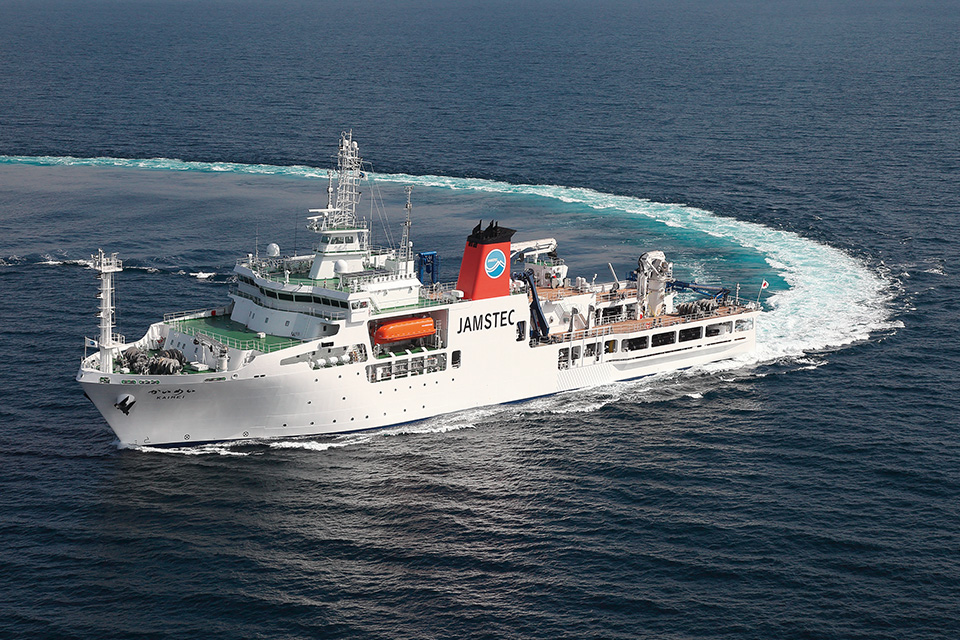
Kaimei is a state-of-the-art vessel that studies the geology of the seafloor (the properties of sediments and rocks, the formation of rock and sediment layers (strata), etc.) and geological resources over a wide area. Samples taken from the seafloor can be quickly analyzed in the vessel's laboratory. Kaimei also continues to research atmospheric changes, and earthquakes and tsunamis at sea or under the seabed, to help prevent and mitigate disasters.
This is a special room, to watch the surrounding seas for whales and other animals, when Kaimei uses air guns that emit sound waves in deep water research.
Support Vessel Yokosuka
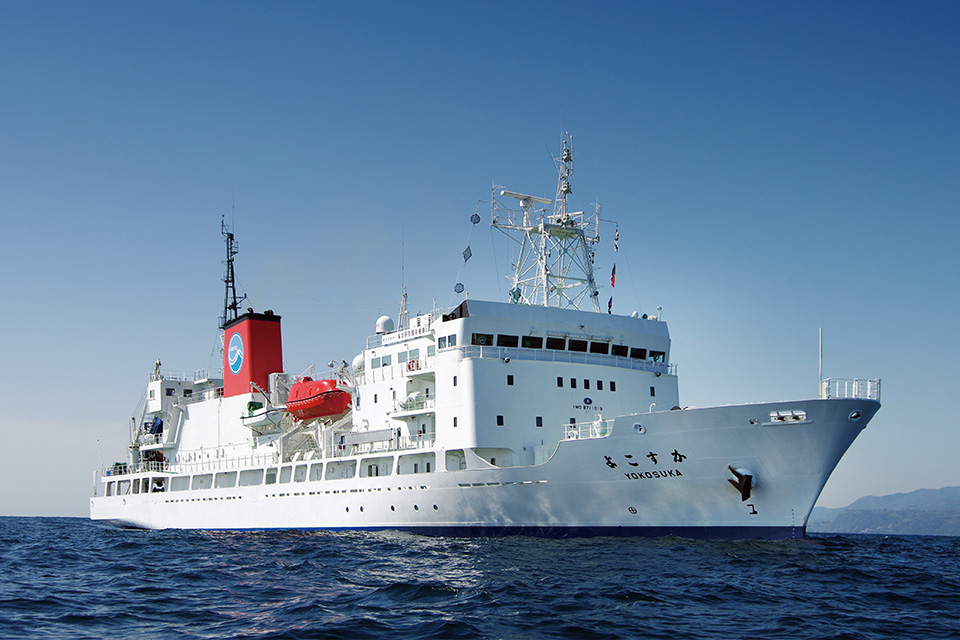
Yokosuka is the only support vessel that can deploy and recover the submersible SHINKAI 6500. Yokosuka can survey the seafloor and makes sure that SHINKAI 6500 can safely dive into the ocean. Engineers and scientists onboard Yokosuka communicate with the SHINKAI 6500 and the AUVs via an acoustic transmission (sound wave).
We use a special underwater phone. This phone can be used in water, and it uses sound waves to carry your voice underwater to the SHINKAI 6500. Sending your voice, and receiving voice signals from SHINKAI 6500, can be delayed for a few seconds while the sound wave travel through the water.
Yes, Yokosuka can deploy and recover the URASHIMA and JINBEI AUVs.
Oceanographic Research Vessel Mirai
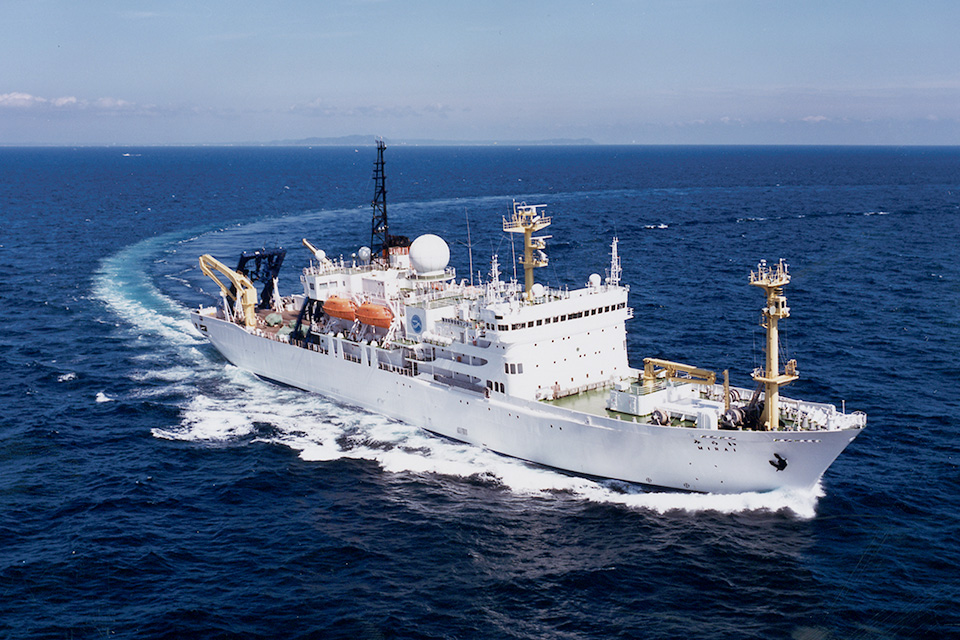
Mirai is capable of conducting observations and research in all the world's oceans for a prolonged time. Mirai has conducted research in the Arctic Ocean, the Pacific Ocean, the Indian Ocean, and other subtropical and subarctic water bodies. Mirai carries special equipment to study not only the ocean but also the atmosphere, weather and clouds.
The large hull of the vessel can carry large observation and research equipments such as TRITON buoys.
This is a "Doppler radar"; it measures the intensity of rain, snow and other kinds of weather over wide area.
Research Vessel Hakuho Maru
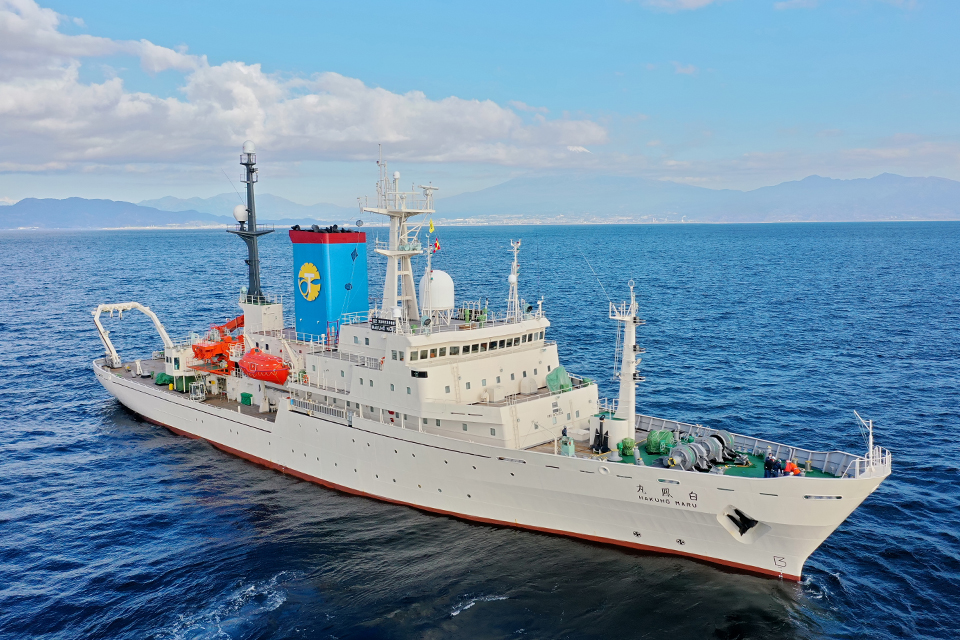
Hakuho Maru has 10 laboratories on board to study the world's oceans. Hakuho Maru is equipped with a wide range of equipment for many kinds of research, and Hakuho Maru is able to investigate from the sea floor to the atmosphere. In addition, there are rooms that can be used for any purpose and rooms with special equipment in the vessel's laboratories, which are used according to the purpose of the research.
This is the symbol of the University of Tokyo. The vessel was built and operated by the university, but is now operated by JAMSTEC. The leaf symbol together with the old Ocean Research Institute [ORI] of the University of Tokyo (and now the Atmosphere and Ocean Research Institute [AORI]) is kept as a memory of the vessel's past association.
Research Vessel Shinsei Maru
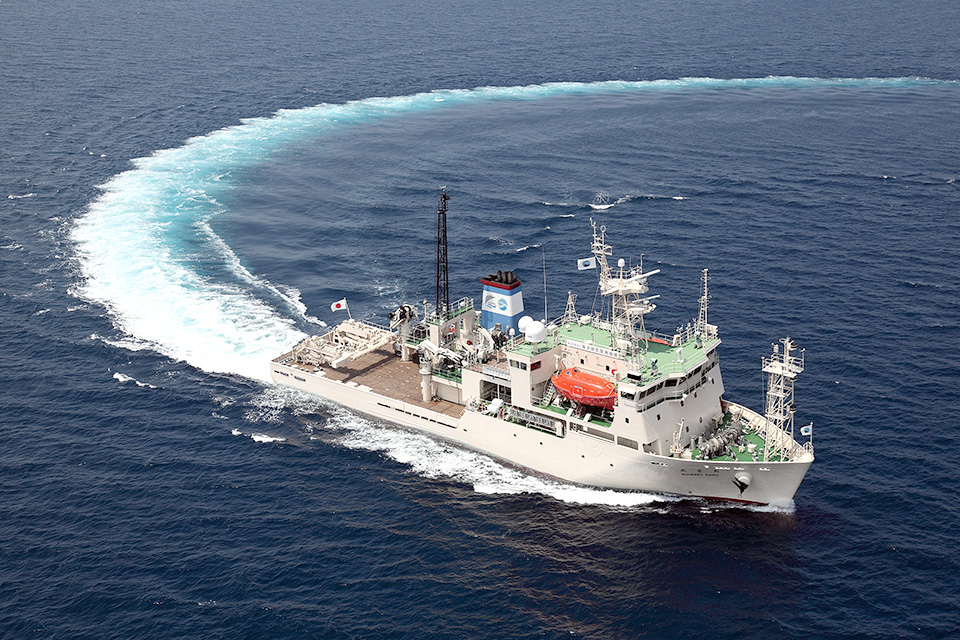
Shinsei Maru was built to study the bathymetry of the sea floor off the Japanese Tohoku coast and changes in the fish communities and other life forms. Shinsei Maru is relatively small, about half the length of the Mirai, but capable of supporting ROVs such as the HYPER-DOLPHIN, and taking various observational instruments. Therefore Shinsei Maru is a truly multipurpose research platform.
Shinsei Maru is particularly good at performing high-resolution bathymetric surveys in shallow coastal waters, especially when compared to the other JAMSTEC vessels.
Let's deep dive to explore these research vehicles!
Human Occupied Vehicle SHINKAI 6500
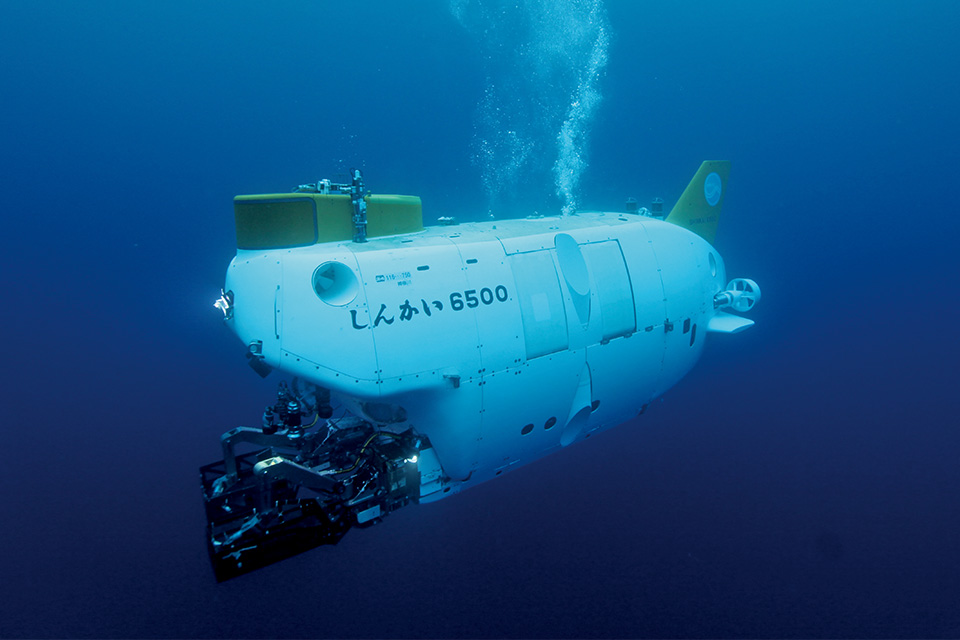
SHINKAI 6500 is a submersible that can dive to a depth of 6,500 m. Crewed by a maximum of three people within SHINKAI 6500 ’s titanium pressure sphere, three windows allow researchers to observe the deep sea with their own eyes.
SHINKAI 6500 weighs about 27 tons; a bit heavier than a firetruck of the same size.
This might make one think that the SHINKAI 6500 will sink when put in the ocean, but it is equipped a special kind of buoyant material that is lighter than water, so it will float in the ocean.
This is kind of like a floating ring for the SHINKAI 6500.
Since SHINKAI 6500 floats, it needs iron weight (or ballast) so it can dive. Once the dive is complete, the SHINKAI 6500 releases this weight to return to the ocean surface.
The pressure shell is about two meters in diameter, a little larger than a standing adult. However, there is so much equipment inside that it's hard to stretch your legs.
Autonomous Underwater Vehicle URASHIMA 8000
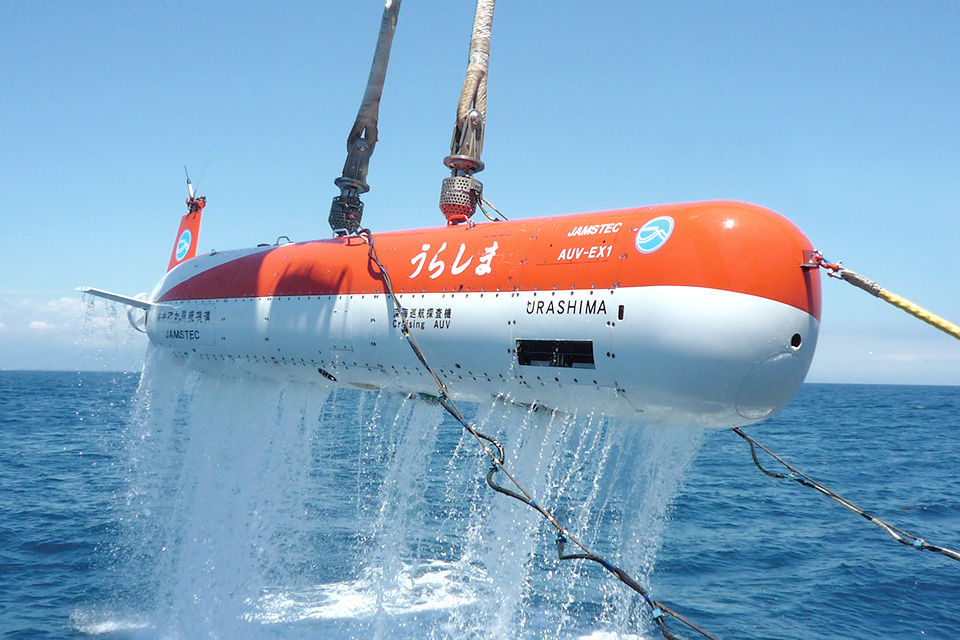
URASHIMA 8000 is a very large unmanned autonomous underwater vehicle (AUV), about 10 m long. It is piloted by a computer system. URASHIMA 8000 is large, so it can carry a lot of equipment for deep sea research. It is especially good at investigating the bathymetry and structure of the seafloor using sound wave.
Autonomous Underwater Vehicle JINBEI
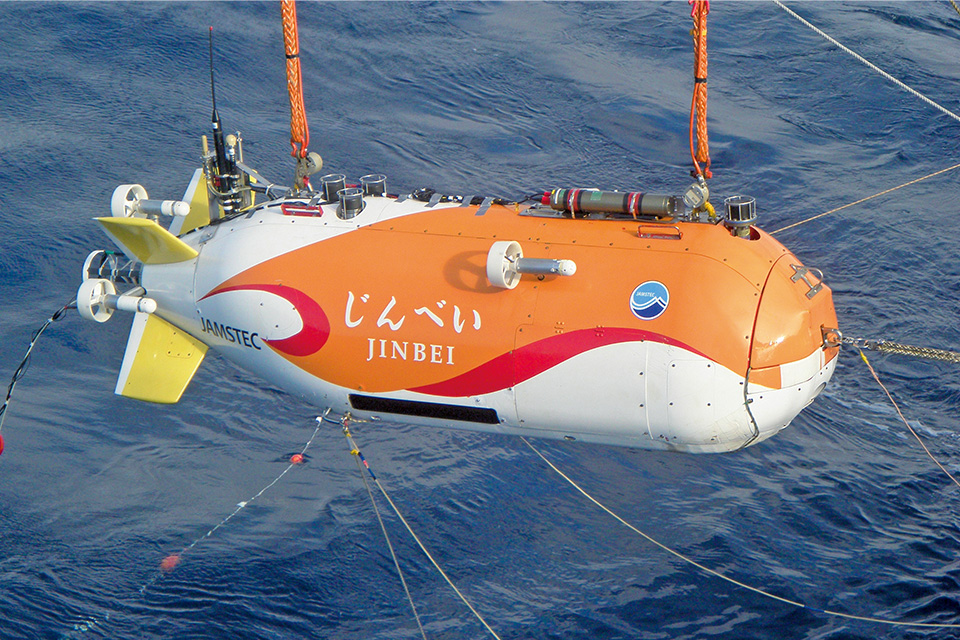
Like URASHIMA 8000, JINBEI is an unmanned autonomous underwater vehicle (AUV) controlled by a computer. JINBEI is less than half the size of URASHIMA 8000 and cannot carry large equipment; however, JINBEI is very maneuverable and fast, so it can quickly change its direction, get closer to the seafloor, and take advantage of its small size to conduct research.
No, there is no place for people inside – that’s one reason why they are computer controlled and piloted.
A survey course is loaded into the computers, and when launched, they will automatically complete the survey and collect data.
They move a little faster than 1 meter per second, which is about the same speed of a walking person.
At this pace, the huge ocean is being surveyed bit by bit.
No, URASHIMA 8000 and JINBEI run on large batteries.
The same type of battery is used in smart phones and other devices.
Remotely Operated Vehicle KAIKO
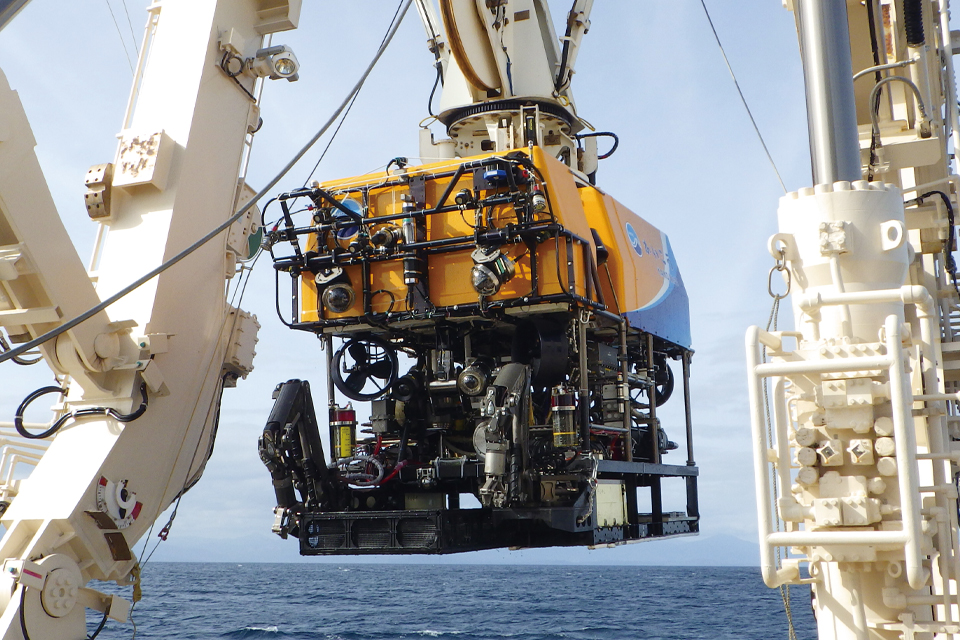
KAIKO is an easy-to-maneuver and very powerful remotely operated vehicle (ROV). Too small for people to get on it, but you can control it remotely from aboard ship. KAIKO has a powerful robot arm that can lift underwater objects weighing 250 kg.
Remotely Operated Vehicle HYPER-DOLPHIN
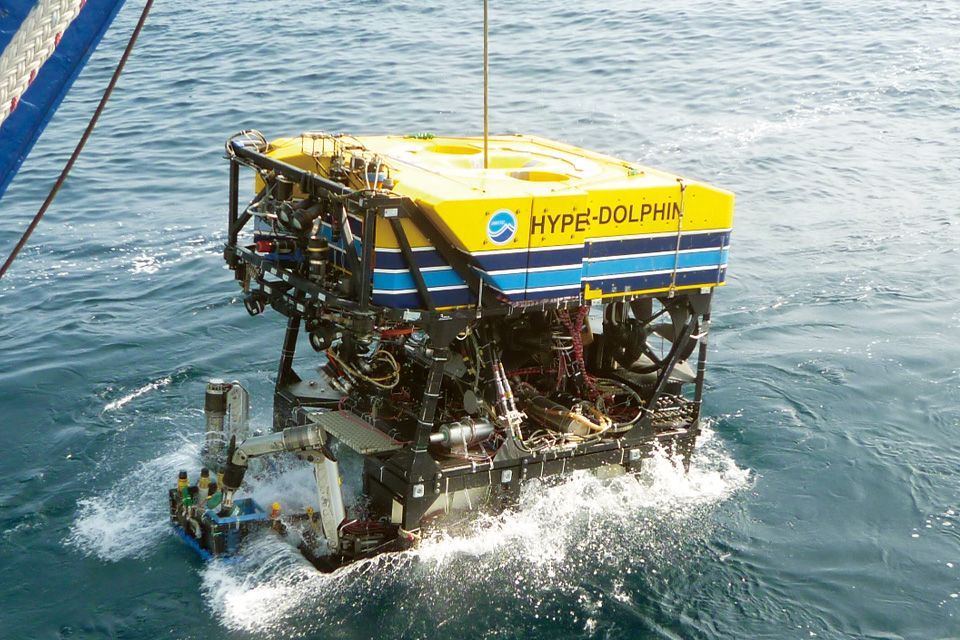
HYPER-DOLPHIN is a remotely operated vehicle (ROV) that can dive to a depth of 4,500 m. It is equipped with multiple cameras, the main camera can move back and forth, up and down, left and right, so it can follow and photograph sea life.
Remotely Operated Vehicle KM-ROV
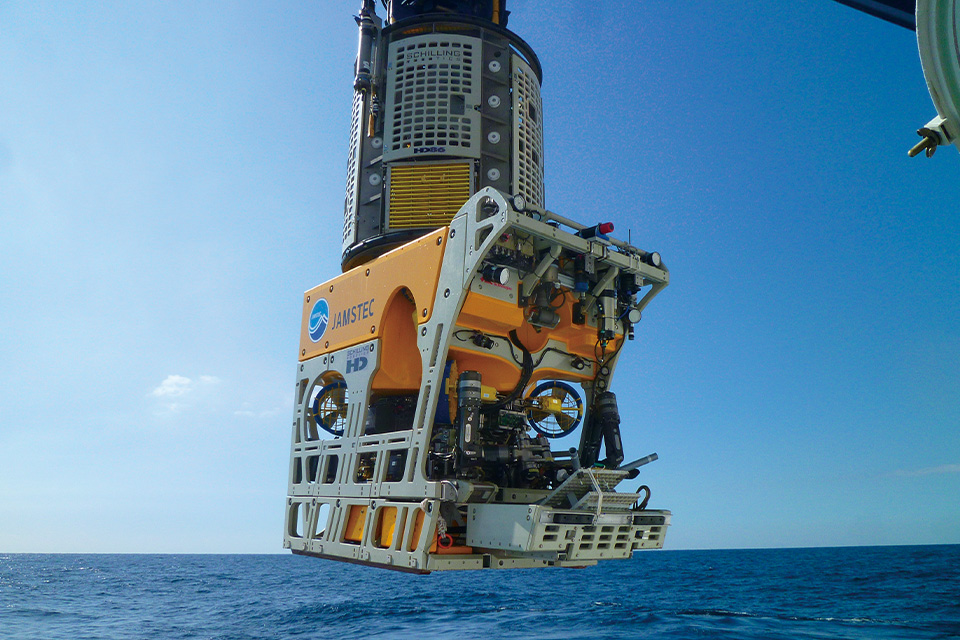
KM-ROV is a remotely operated vehicle (ROV) of the mother ship Kaimei. Like KAIKO, people control the ROV from aboard ship, but it also has a computer assist. The computer is good at simple maneuvers such as keeping the ROV moving at a constant speed and facing the same direction.
No. These ROVs are designed to be remotely controlled by people from the ship.
Researchers can safely observe the sea floor from the comfort of the ship.
These ROVs are receive power from the ship through connecting umbilical cables, so they do not need batteries.
This cable also sends signals from the ship to the ROV to control it; and the ROV sends data and camera images to the ship through the same cable.
Deep Ocean Floor Survey System DEEP TOW
DEEP TOW is a vehicle that does not have the power to move on its own. Instead, DEEP TOW is pulled along by a ship, and it observes the undersea environment with a camera and surveys the topography with sound wave. DEEP TOW is a simple and cheap vehicle to build, and you can put a lot of research equipment inside its framework.
